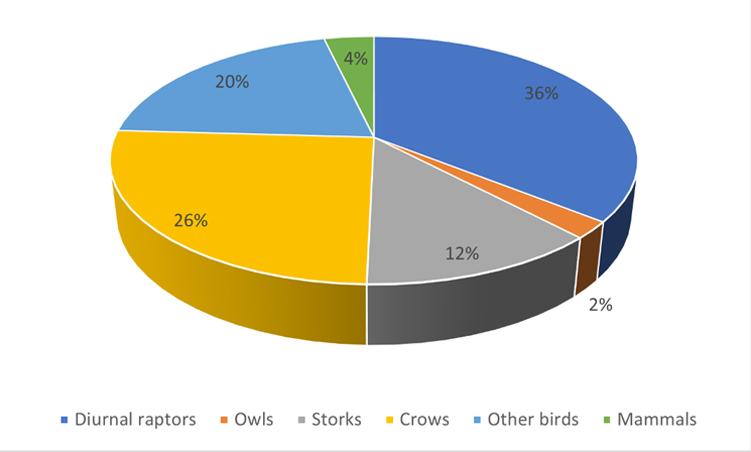The platform went live in 2018 and now that it is 5 years old, we make a summary of the main achievements.
So far, 55 users have registered and have characterised almost 1,600 supports in 10 different countries, 4 European (Spain, UK, Greece and Portugal), 2 Asian (Nepal and Malaysia), 2 African (Morocco and Zimbabwe) and 2 South American (Argentina and Peru). The country with the highest number of registered electricity pylons is Morocco, with 578, followed by Nepal with 452 and Spain with 280; the latter country has the highest number of users. The information collected includes more than 120 cases of mortality, mostly electrocutions; there are only 4 records of collisions, 3 in Spain and 1 in Morocco, the latter involving a griffon vulture. Crows and storks account for a large proportion of the deaths, 35 and 17 respectively, while birds of prey together account for 52, of at least 7 different species (griffon vulture, osprey, Bonelli’s eagle, short-toed snake eagle, long-legged buzzard, common buzzard, lanner falcon). On 25 occasions the species is not identified, usually due to the type of remains found (bones and/or some feathers), 4 of them are mammals (probably small carnivores).
Regarding the type of supports where the fatalities are concentrated, practically 50% are anchor supports with horizontal crossarm, a design in which the danger comes from a short length of the chain of insulators; 41.7% have pin insulators, installed on top of the crossarm, either horizontally or forming a triangle, configurations which are almost always very dangerous. The remaining 9.2 % are supports with suspension insulators; although in general this layout is not usually very dangerous, in this case it coincides with a vault crossarm that has a lower arm where the birds, when perching, are very close to the central conductor; this is a very widespread design in Morocco, where these cases are located.
The e-faunalert platform aims to continue improving and serving in the coming years to facilitate the work of collecting data on wildlife-power line interactions and to help identify the most dangerous hotspots in order to implement solutions.

Types of faunal groups affected by electrocution or collision events, in percentage, according to data collected by users through the e-faunalert app between 2019-2023. ©IUCN
